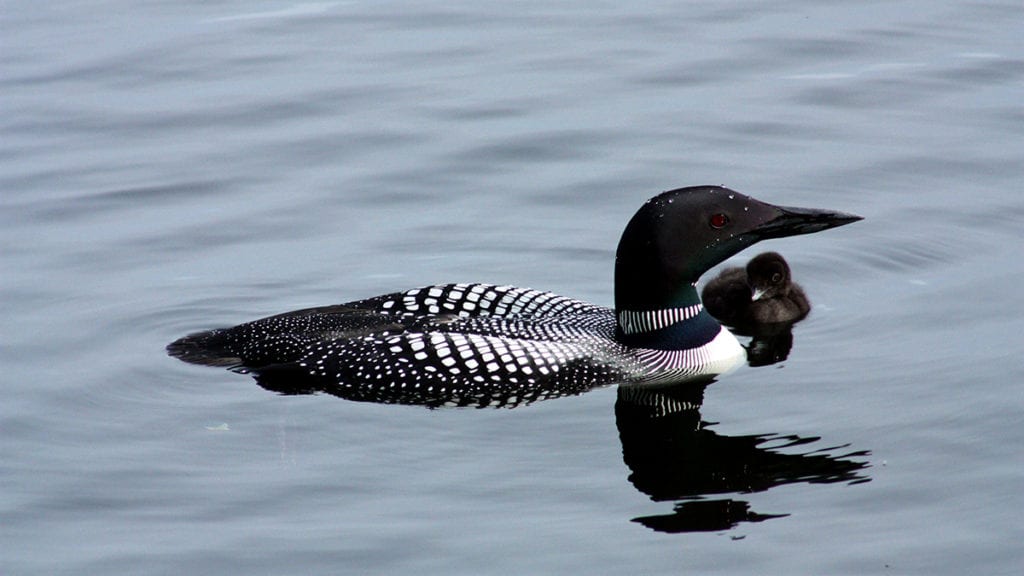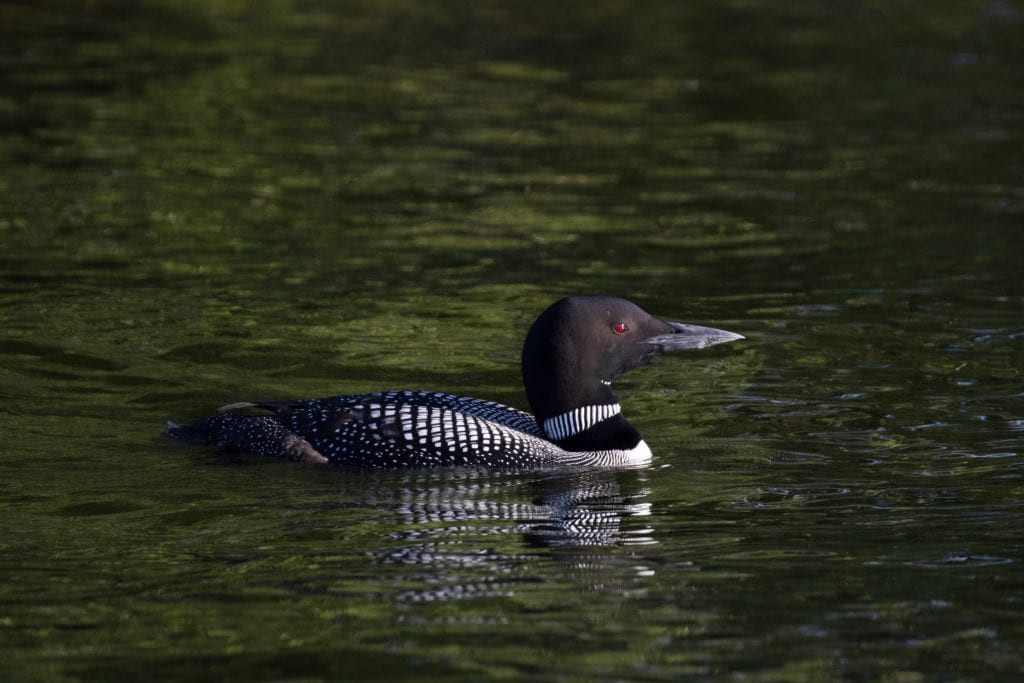
COMMONLY MISIDENTIFIED SPECIES: It’s not always easy to identify Maine’s most beloved birds. Maine Audubon biologists and naturalists commonly field identification questions along the lines of “is it this, or that?”. Many species look similar from a distance, but there are some great telltale signs, both visual markers and behaviors, that can help identify species. This is an occasional series to try to help you know what you are looking at!
Diving birds, like loons, may have similar profiles when seen from a distance on Maine’s lakes.
Common Loons (Gavia immer) are perhaps the most recognizable bird in Maine, but there are a few species with which they can be easily confused on lakes during the summer. Like loons, most of these easily misidentified species are also diving birds that spend part of their time hidden under the surface.

Double-crested Cormorants (Nannopterum auritum) breed along Maine’s coast, but many disperse to feed in lakes during the summertime. While they are also large, dark divers, they are dark brown or black all over, and generally do not have extensive white patches like loons, though juveniles are tan or light brown underneath. Their bills are bright orange-yellow, compared to the black bills of loons (which fade to gray in winter), and thinner with a hooked end, compared to the dagger-shaped bill of loons. Cormorants must dry their feathers after fishing by perching in the sun with wings outstretched, something that loons never do.
Common Mergansers (Mergus merganser) nest and feed in similar lake habitats during the summer, and may be confused with loons at a distance. Plumage-wise, Common Mergansers are much lighter-colored: males have a mostly white body and dark green head, and females have a mostly gray body with a burnt orange head. Both sexes have a similar thin, hooked orange bill, much like Double-crested Cormorants, and in flight, they both show white wing patches that loons do not have.
Common Goldeneye (Bucephala clangula) only breed in the northern lakes of Maine, north of a line extending northeast from Lake Umbagog to Katahdin. They are significantly smaller than loons, and have similar coloration to Common Mergansers, being generally lighter than loons in all plumages. Their bills are more similar to dabbling ducks: short and triangular.
Learn more about the Maine Loon Project here. If you are interested in volunteering for the Annual Loon Count (which takes place every July), email conserve@maineaudubon.org.
